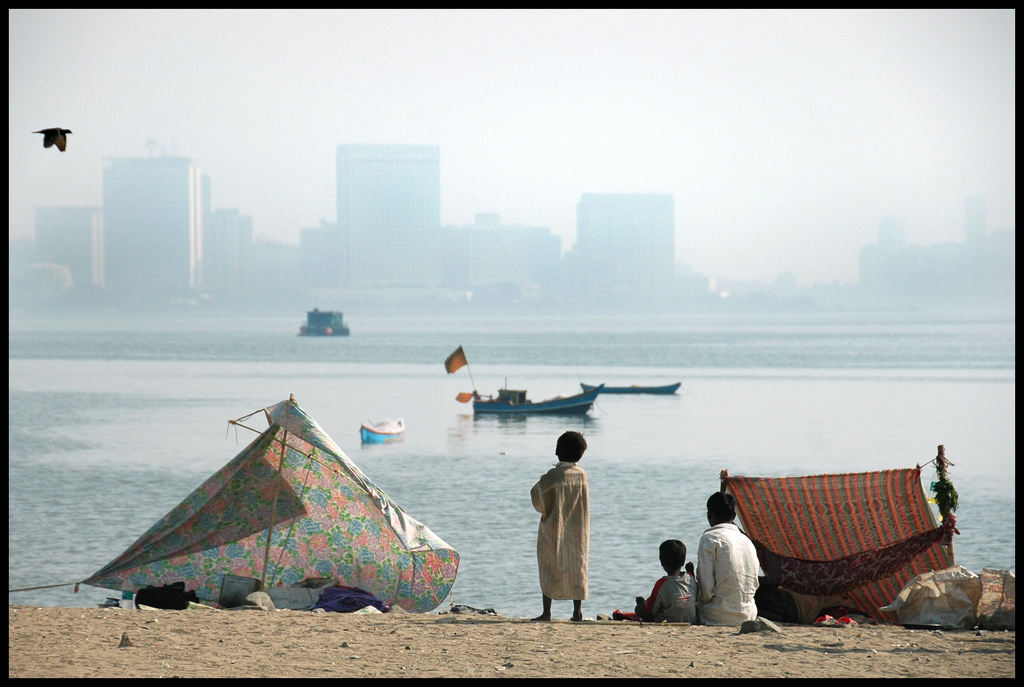Like this article? rabble is reader-supported journalism. Chip in to keep stories like these coming.
For those of you who already think the world is going to hell in a handbasket these days, I have lamentable news: You don’t know the half of it. As Danny Glenwright, dynamic executive director of Action Against Hunger Canada (ACF, for the French name), informed his supporters the other day:
“At Action Against Hunger, just because it’s summer doesn’t mean our work stops. It is especially true this August. The hunger crisis in Nigeria behind Boko Haram’s front lines and the ongoing suffering in the Middle East due to the Syrian crisis have ensured our teams are working overtime, delivering food and water to those most in need. In addition, massive droughts due to climate change and El Nino have left millions of children severely malnourished across sub-Saharan Africa.”
Good for Mr. Glenwright for including climate change here front and centre.
He is not alone these days in trying to get attention for the hunger crisis. The Globe and Mail recently carried a full-page ad by the United Nations World Food Programme (WFP), which describes itself as “the world’s largest humanitarian agency providing food assistance to some 80 million people in 80 countries.” Like ACF, the ad highlights the little-known famine now devastating southern Africa. “Millions of people are on the brink,” we’re told, and you mustn’t doubt it for a second.
Of course, as we all know, there are dozens more non-governmental organizations (NGOs) that want our money for dozens of other urgent causes. AIDS immediately leaps to mind. How do we decide where to send our modest contribution?
Action Against Hunger is the Canadian chapter of a European-based international humanitarian organization that “fights hunger and its root causes worldwide.” Most of its local funds come from the Canadian government. So in 2014, of its $11 million in revenues, fully $8 million came from Ottawa’s aid budget; $264,431 came from individual donations.
These are modest sums to be sure, but every penny counts, and ACF’s website is very smart and convincing in assuring potential donors that an impressive 93 per cent of all pennies go directly to projects and only seven per cent to administration. In fact, the executive director, a long-time champion of social justice, is also the PR and communications person, and there’s only a single fundraiser. And it doesn’t place full-page ads in The Globe.
I also cheer on Action against Hunger’s focus on sanitation, a subject that so many UN organizations and NGOs deal with awkwardly. Yet it’s a real priority: If everyone practised better sanitation techniques and had access to clean water, myriad health problems would be instantly solved.
WFP is a huge bureaucracy and, like so much of the UN, does critical work. Yet it’s characterized by much inefficiency, lots of controversy and lots of press officers to deal with the controversies.
Governments are its principal source of funding — the organization receives nothing from the UN itself. While the funds raised are never enough to meet needs, they sound like a great deal of money, especially compared with the likes of ACF. In 2015, WFP contributions came to just over $5 billion, a quarter of a billion from Canada. In its Globe ad, it asks each of us readers to donate a meagre $10.
You will wonder whether WFP really needs more than $5 billion, and whether your 10 bucks really matters. The answers, of course, are yes and yes. The need invariably exceeds the income and no doubt every penny does help.
But I’m inclined to favour a smaller, more hands-on agency like Action Against Hunger.
I’m also partial to NGOs that co-operate instead of competing for scarce dollars. So I’m a great fan of Canada’s Humanitarian Coalition — bringing together CARE Canada, Save the Children Canada, Plan International Canada, Oxfam Canada and Oxfam-Québec during humanitarian crises. When disaster strikes, each member agency brings its specific expertise to implementing humanitarian programs.
Similarly, I love those who practise solidarity with their foreign partners, not charity for the needy: Inter Pares, the Stephen Lewis Foundation, Kairos and a few others. And I always trust the Red Cross.
Just watch out for agencies that buy food from rich countries and ship it all the way to poor countries. This “tied aid” is often just a lavish handout to corporate farming giants and a wasteful, inefficient way to deal with famine. Most donor countries, including Canada, have given up tying food aid to their own food production. But the agribusiness lobby in the United States assures that America still practises this corrupt system.
Of course, if you’re paying any attention at all to world inequality, you’ll wonder why anyone needs your humble contribution at all.
WFP may receive $5 billion a year, but look at that figure in perspective. Relatively speaking, it’s trivial. As a major Oxfam report pointed out earlier this year, in 2015 the wealth of the richest 62 people on Earth was $1.76 trillion and growing fast. Forbes calculates there are 1,826 billionaires in the world, worth a total of $7.05 trillion.
The mind boggles.
In a rational, decent world, neither little guys like ACF nor UN giants like WFP would need to go around begging for 10 more dollars to deal with humanitarian emergencies. But it’s not and they do. So before summer’s over, please shell out a couple of hundred bucks to your favourite NGO. And get angrier about obscene inequality. You won’t be sorry.
Like this article? rabble is reader-supported journalism. Chip in to keep stories like these coming.
Image: Flickr/Shreyans Bhansali



